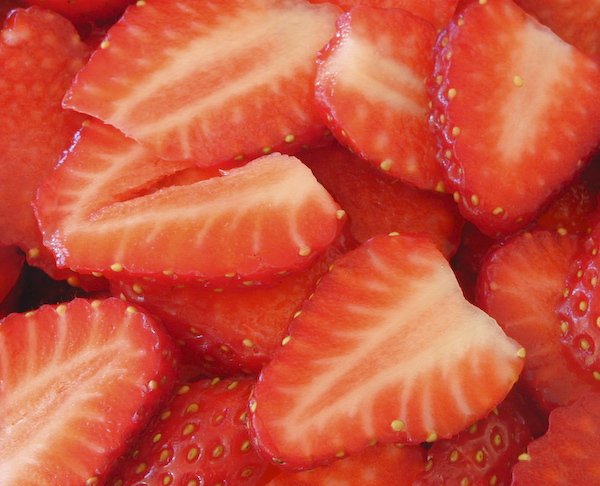Food for the Eyes
There are many categories of photographic subjects, and I’ve dabbled in a few, but one category I often overlook is foods.
Certainly, I have a lot of exposure to food. I eat 3 meals each day, and do some snacking in-between. Granted, some food is not particularly appealing visually (some casseroles come to mind), but a lot of food is actually quite beautiful, especially when the chef pays attention to the presentation. In fact, when the chef plays the role of artist, the photographer’s work is that of meta-art. If you are both the chef and the photographer, then you have an even wider range of artistic possibilities as you have the opportunity to both create the scene and capture an image of it.
Here are a few things to keep in mind when photographing food:
Camera Support
Like other forms of macro photography, taking pictures of food is greatly helped by a tripod. Doing this helps fix the subject-to-camera distance and orientation which is important for maintaining critical focus. Further, when the camera is on the tripod, you’re more free to adjust the subject, background, and lighting.
Background
It is very easy to put the food in the center of both the image and your attention, and end up with a distracting background. On a formally set dinner table, you may have some helpful objects in the background. In a kitchen, the dirty dishes, cutting boards, and the like may be entirely unwanted. Make sure to check the negative space as you compose your image.
Aperture and Shutter Speed
Most food does not move very fast, and thus a slow shutter speed (particularly when the camera is on a tripod) is often an easy way to enable the use of a smaller aperture when using natural lighting. The smaller aperture gives us greater depth-of-field, which helps us to get both the front and back of the dish in focus at the same time. Be careful that you don’t use too small of an aperture; you may get so much depth-of-field that objects in the background become more sharply focused and thus potentially more distracting. So, the “right” aperture is something you have to experiment with on each shot; here’s where both a depth-of-field preview on your camera and (with digital cameras) the ability to view the image on the camera back’s LCD can come in quite handy.
Lenses
Generally, a lens that can focus closely (within 12”) is going to be most useful. Often, this is a macro lens, especially designed for close-focusing. At other times, a wide-angle lens works well for capturing a broad display of food, such as at a banquet or an open market. The wider the lens, the more prone you will be to having distractions in the background; for this reason, a modest telephoto with macro capabilities is often the tool of choice.
Lighting
Often the food is indoors, where lighting is low. Incandescent lights (particularly the most common ones with a tungsten filament) tend to produce very warm (orangey) light. For some foods, this can be ideal; for other foods, this may be too warm; with digital photography, it is a fairly simple matter to set the white point (color balance) either in the camera or on the computer. There may be the temptation to use flash, but do so carefully. First, most flashes tend to produce rather harsh light — sharp shadows with high contrast — so a diffuser (or bouncing the flash off another surface such as a ceiling) can help a lot to create softer lighting which is more complimentary of the food being photographed. Second, because you’re working close to the subject, the relative distances between the front and back of the dish may be significant, raising the possibility that the front of the dish will be washed out and the back of the dish will become dark; flash illuminates most evenly when all of the subject is equidistant from the flash, so you may try putting your flash above and aimed down onto the dish. Third, the color of the flash is approximately daylight color, which may be too cool (bluish), and uncomplimentary to the food. Again, this can easily be compensated for with digital photography once the image is on the computer.
Food is somewhat of an under-photographed arena. Unlike landscapes and portraits, where the desired subject matter may be unreachable or uncooperative, food is often all around us and is usually quite good at holding still while you take the time necessary to make an awesome shot.
This image was taken with natural lighting using an Olympus C-2020z in macro mode; with exposure of 1/3s at f/8. It’s worth noting that the smaller digital cameras (such as the Olympus I used) often have a smaller image sensor, which give you lots of depth-of-field — and that’s very helpful when photographing food.

Tip of the Week
2007.09.17

